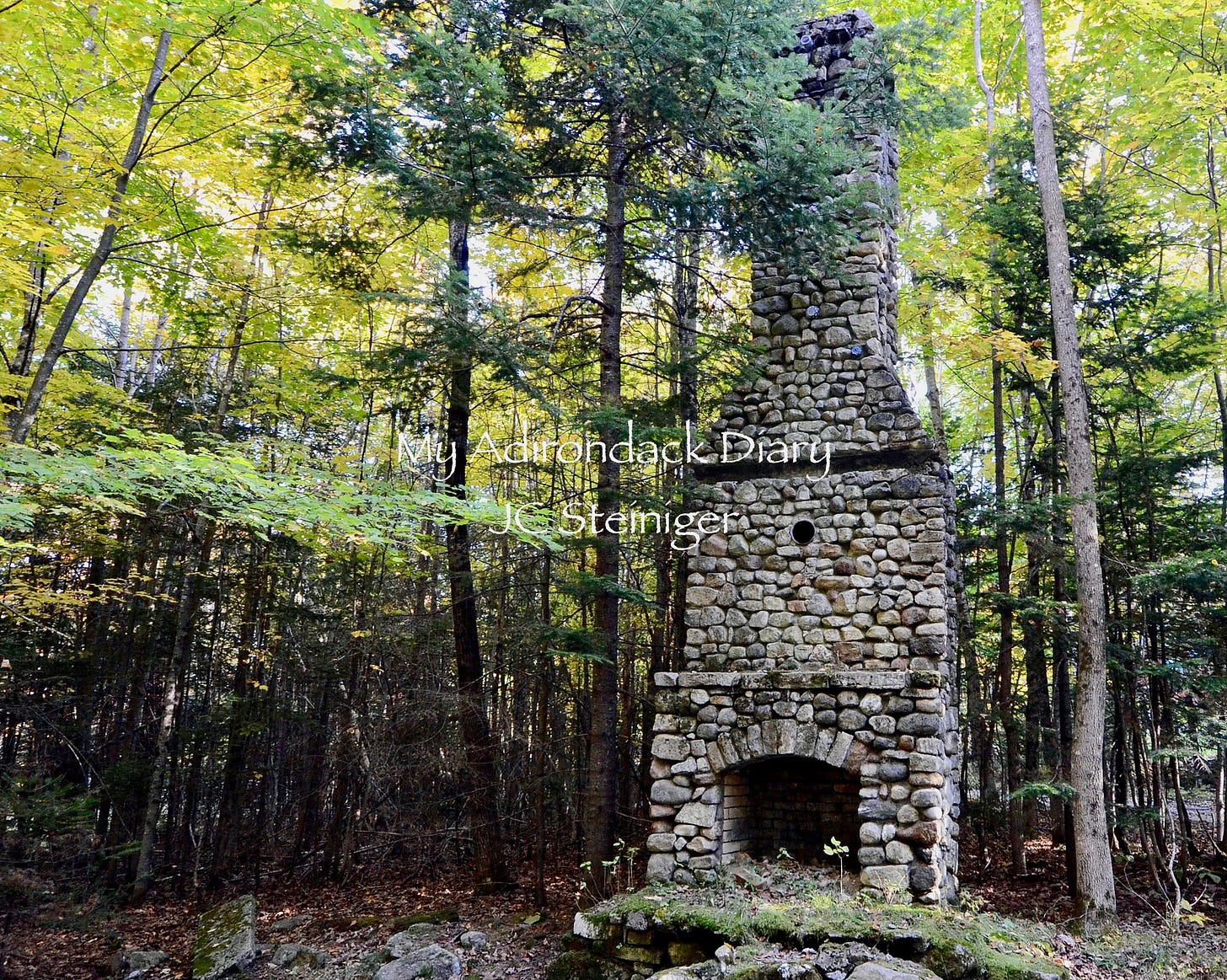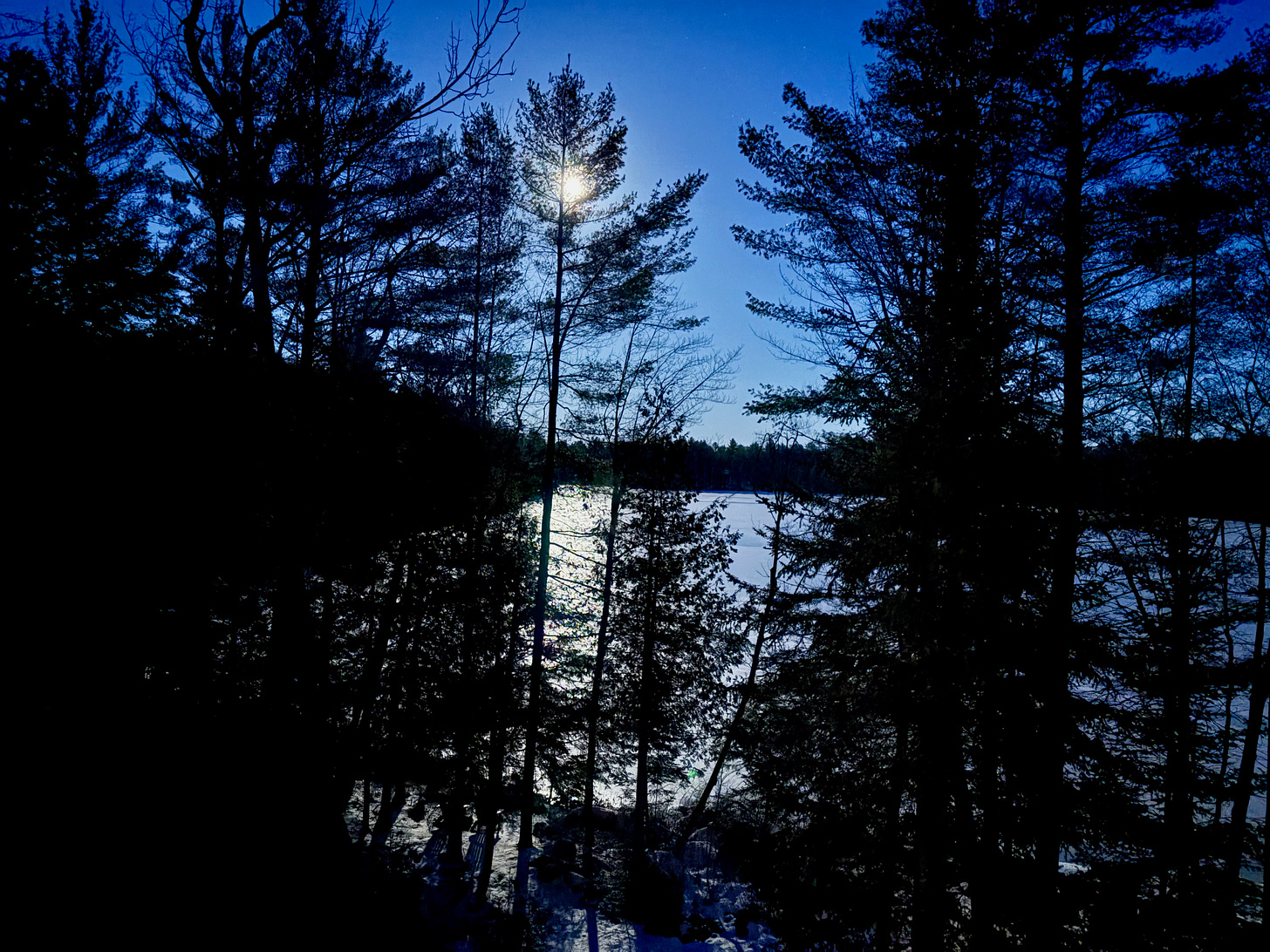December 21, 2024
Overnight temperatures fell into the teens last week, and we woke up on Tuesday morning to a frozen pond. The small Adirondack wilderness ponds usually freeze earlier than the larger lakes like Schroon Lake and Lake George. They say it is a combination of not just temperatures but also wind motion. The small ponds are protected from the wind and freeze more easily. We are also at five hundred feet higher elevation than Schroon Lake, only three miles away. That five hundred feet usually means that our local temperature is three or four degrees colder all year, something that we appreciate very much in August—not so much in February. In Schroon Lake we actually have three different USDA Hardiness Zones for gardening, 4a, 4b and 5a, brought about by the changes in elevation throughout the township.
As beautiful as an ice-covered pond looks, I am always sad to see it transition from open water. The few weeks of “icing in” brings loads of activity on the water. Migrating waterfowl make their last layovers on the way to their wintering grounds. Most are heading south. Our local Adirondack loons head east by southeast to spend the winter anywhere from coastal Rhode Island down to the Carolinas. This year, we had placed a floating loon “nest raft” on the pond in an effort to improve the breeding efficacy of our resident pair. The Adirondack Center for Loon Conservation provided the nest raft. The raft has to be removed and stored for the winter before the pond ices over. Placing a nest raft just off the shoreline improves their chances of successfully raising a chick by placing the eggs out of reach of land-based predators like racoons and fox and bear. Bald eagles are a primary loon chick predator and the raft nest is shielded by a hooped “avian guard” to shield the chicks from marauding eagles. Unfortunately, our loons did not have any breeding success this season but my friends at nearby Elk Lake told me that it took three or four years for their loons to get comfortable enough with the artificial nest raft to use it.
Some of our wild “snowbird” neighbors, most of the songbirds and our resident loons have already left for the winter. Those neighbors this summer included a pair of bald eagles that treated the pond like a cafeteria, spotting fish from a tall pine at the east end of the pond before strafing along the surface of the water to grab it. Our local osprey uses a decidedly different technique to catch the same quarry. She will circle high above the pond in the wind drafts, and dive bomb a fish swimming too close to the water’s surface. You can always tell it is the osprey and not an eagle just by the way it crashes into--and under--the water and surfaces with a fish in its talons and flies off. I believe our osprey is the same bird that I see nesting each summer near the heron rookery off Big Pond in the nearby Hoffman Notch Wilderness Area. Sometimes the bald eagles will spend the winter with us in the Adirondacks. You see them occasionally visiting ice fishing sites looking for discarded minnows that anglers had been using as bait. We said goodbye to the broadwing hawk that arrives every spring to build a nest up in the woods behind the barn. I will look forward to her arrival next year. The local barred owls are year round residents and get more vocal during the winter with their distinctive “who, who, who cooks for you all” calls at night. An occasional single drop of red blood stands out in the snow beneath the bird feeder and is evidence of a barred owl’s nocturnal visit, the drop of blood is all that is left of the mouse snacking on bird seed under the feeder. The snacker becomes the snack.
Our resident beavers have been very active lately, storing their winter cache of food just under the water’s surface near their lodges on the pond, now numbering five. Beavers are fun to watch as they circle the pond at dusk looking for a meal or construction material. If you are a fan of white birch or willow you probably feel differently. Beavers love them, along with apple trees. We wrap these types of trees that are close to the shoreline with hardware cloth to protect them from our hungry rodent neighbors.
Last week’s full moon illuminates a newly frozen Bullet Pond, Vanderwhacker Mountain Wild Forest, Adirondacks, Essex County, NY
We also enjoyed watching two otters over the last few weeks. Usually, our pond otters are more likely visitors than actual new neighbors. They seem to stay for a visit, do some fishing, but then move on. They often arrive for a few weeks just as the shoreline is icing up, or perhaps they are just easier to see when they are sitting on the ice with their lunch, munching on a freshly caught fish or some freshwater mussels. Otters are known to take over a beaver lodge and call it home, although I have never seen any interaction between these two pond residents.
As the ice expands across the water, the only remaining open water will be at the shoreline inlets where streams enter the pond. One of these streams runs through our property and feeds into the lake next to the house. During the winter we will see muskrats and mink and occasionally an otter using this opening in the ice to enter the pond looking for a meal. Last winter one of our resident muskrats took to hanging out underneath our bird feeders, stealing the sunflower seeds spilled by the marauding hordes of goldfinches, who are notoriously sloppy eaters. In addition to being sloppy, goldfinches are also piggy, sitting on their feeder perch shoveling seed into their face until they look too heavy to fly, or until they have emptied the feeder while the local chickadees wait patiently nearby for their turn. This muskrat feeding behavior was new to me; I had never seen one raiding a bird feeder. By spring the muskrat had worn a path from the lake to the bird feeder that was packed down so deep in the snow that it could have been mistaken for a bobsled run at Lake Placid. We are wondering if he (or she?) will make an appearance this winter.
It has now been a month since our osprey has flown off to warmer climes and open water. It will probably be a few more weeks before the ice fishers start poking holes in the ice. Some perch filets would be nice for dinner, don’t you think? Our human snowbird neighbors are missing all of this and we do feels sorry for them. I can’t think of a more beautiful place to spend Christmas than here in the Adirondacks.
I wish you a merry one and a happy holiday season, hopefully surrounded by friends and family and much love.
Comments and suggestions are always welcome, as are Shares (!) If you like what you have read, and you would like to receive a Saturday morning email with the current week’s Adirondack Diary update, please consider subscribing.
All posts are public and available for free.





